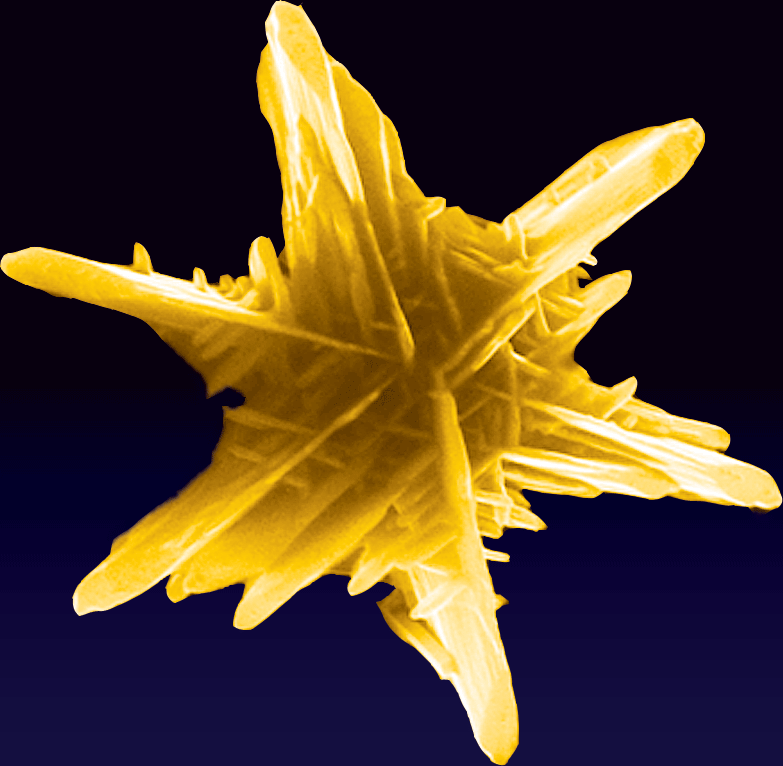This month sees the following articles in CrystEngComm that are in the top ten most accessed:-
Assembling Anderson-type polyoxometalates with manganese(ii) in the presence of pyridylacrylic acid ligands: a 2D layer and two polymorphs Haiyan
An, Xuan Liu, Hao Chen, Zhengbo Han, Hua Zhang and Zhaofei Chen
CrystEngComm, 2011, 13, 5384-5393 DOI: 10.1039/C1CE05391D
a-Fe2O3 hierarchically hollow microspheres self-assembled with nanosheets: surfactant-free solvothermal synthesis, magnetic and photocatalytic properties
Jing-San Xu and Ying-Jie Zhu
CrystEngComm, 2011, 13, 5162-5169 DOI: 10.1039/C1CE05252G
Microporous metal–organic frameworks for acetylene storage and separation
Zhangjing Zhang, Shengchang Xiang and Banglin Chen
CrystEngComm, 2011, 13, Advance Article DOI: 10.1039/C1CE05437F
Ligand-deprotonation induced structural diversity in a ternary CuII-triazole-tetracarboxylate self-assembly system: Synthesis, crystal structures, and magnetic behavior
En-Cui Yang, Zhong-Yi Liu, Li-Na Zhao, You-Li Yang, Cui-Hua Zhang and Xiao-Jun Zhao
CrystEngComm, 2011, 13, 5401-5408 DOI: 10.1039/C1CE05396E
Additive controlled crystallization
Rui-Qi Song and Helmut Cölfen
CrystEngComm, 2011, 13, 1249-1276 DOI: 10.1039/C0CE00419G
Cadmium(II) and zinc(II) metal–organic frameworks with anthracene-based dicarboxylic ligands: solvothermal synthesis, crystal structures, and luminescent properties
Jun-Jie Wang, Tong-Liang Hu and Xian-He Bu
CrystEngComm, 2011, 13, 5152-5161 DOI: 10.1039/C1CE05287J
Lanthanide, Y and Sc MOFs: where amazing crystal structures meet outstanding material properties
Ángeles Monge, Felipe Gándara, Enrique Gutiérrez-Puebla and Natalia Snejko
CrystEngComm, 2011, 13, 5031-5044 DOI: 10.1039/C0CE00891E
Temperature-dependent supramolecular isomerism in three zinc coordination polymers with pamoic acid and 1,4-bis(imidazol-1-ylmethyl)-benzene
Suna Wang, Yanqiang Peng, Xilian Wei, Qingfu Zhang, Daqi Wang, Jianmin Dou, Dacheng Li and Junfeng Bai
CrystEngComm, 2011, 13, 5313-5316 DOI: 10.1039/C1CE05463E
Controlled synthesis of wurtzite CuInS2 nanocrystals and their side-by-side nanorod assemblies
Xiaotang Lu, Zhongbin Zhuang, Qing Peng and Yadong Li
CrystEngComm, 2011, 13, 4039-4045 DOI: 10.1039/C0CE00451K
A single-crystalline microporous coordination polymer with mixed parallel and diagonal interpenetrating α-Po networks
Shuangbing Han, Zhenbo Ma, Yanhu Wei, Victor Ch. Kravtsov, Brian S. Luisi, Indrek Kulaots and Brian Moulton
CrystEngComm, 2011, 13, 4838-4840 DOI: 10.1039/C1CE05354J
Why not take a look at the articles today and blog your thoughts and comments below.
Fancy submitting an article to CrystEngComm? Then why not submit to us today or alternatively email us your suggestions.











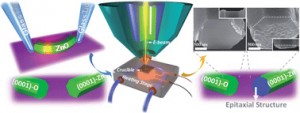
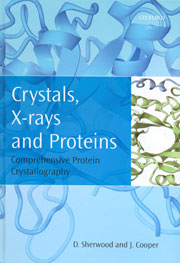 Check out this Chemistry World review by Karen McLuskey of Crystals, x-rays and proteins. Comprehensive protein crystallography by Dennis Sherwood and Jon Cooper
Check out this Chemistry World review by Karen McLuskey of Crystals, x-rays and proteins. Comprehensive protein crystallography by Dennis Sherwood and Jon Cooper
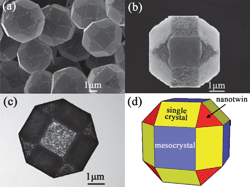 In this HOT article, Chinese researchers synthesized novel polyhedral 26-facet CuS microcages decorated with unique crystalline structures as building blocks via a facile sacrificial Cu2O templates solution route. Each of the polyhedral 26-facet CuS microcages is constructed of three different structural shells, which are enclosed by three pairs of square mesostructural shells, four pairs of nanotwinned triangular shells, and six pairs of rectangular single crystalline shells. The study should be of great importance for the “bottom-up” assembly of unusual hollow ordering superstructures.
In this HOT article, Chinese researchers synthesized novel polyhedral 26-facet CuS microcages decorated with unique crystalline structures as building blocks via a facile sacrificial Cu2O templates solution route. Each of the polyhedral 26-facet CuS microcages is constructed of three different structural shells, which are enclosed by three pairs of square mesostructural shells, four pairs of nanotwinned triangular shells, and six pairs of rectangular single crystalline shells. The study should be of great importance for the “bottom-up” assembly of unusual hollow ordering superstructures. In this CrystEngComm Highlight article Colin Seaton from the University of Manchester looks at the crystal engineering of co-crystals between carboxylic acids. Seaton looks at how Hammett substitution constants can help in the design and creation of multi-component crystalline materials.
In this CrystEngComm Highlight article Colin Seaton from the University of Manchester looks at the crystal engineering of co-crystals between carboxylic acids. Seaton looks at how Hammett substitution constants can help in the design and creation of multi-component crystalline materials.
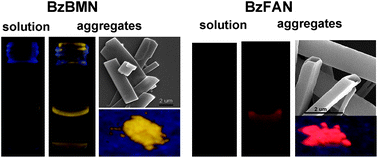 A CrystEngComm article by Ben Zhong Tang and colleagues has been highlighted in the weekly ACS Noteworthy Chemistry section:
A CrystEngComm article by Ben Zhong Tang and colleagues has been highlighted in the weekly ACS Noteworthy Chemistry section:
